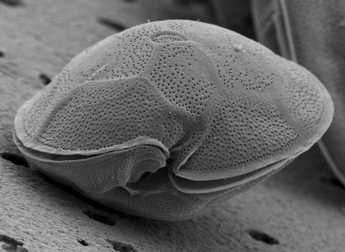Ciguatera: Difference between revisions
From coraldigest
| Line 1: | Line 1: | ||
= Ciguatera = | = Ciguatera = | ||
<span class="floatright" style="height:288px; width:214;">https://www.e-education.psu.edu/earth103/sites/www.e-education.psu.edu.earth103/files/module07/Gambierdiscus.jpg</span> | |||
Ciguatera is the most frequently reported seafood-toxin illness in the world. <ref name ='Friedman'>Friedman, Melissa A. et al. “Ciguatera Fish Poisoning: Treatment, Prevention and Management.” Marine Drugs 6.3 (2008): 456–479. PMC.</ref> It is a food borne illness caused by eating fish containing toxins produced by dinoflagellate, a form of micro-algae, ''Gambierdiscus toxicus''. <ref name='CDC'>"Ciguatera." Centers for Disease Control and Prevention. Centers for Disease Control and Prevention.</ref> The most common symptoms of ciguatera poisoning include nausea, vomiting, diarrhea, muscle pain, dizziness, and vertigo<ref name ='CDC'></ref>. While there is no cure for Ciguatera, there are multiple treatments available.<ref name ='Friedman'></ref> | Ciguatera is the most frequently reported seafood-toxin illness in the world. <ref name ='Friedman'>Friedman, Melissa A. et al. “Ciguatera Fish Poisoning: Treatment, Prevention and Management.” Marine Drugs 6.3 (2008): 456–479. PMC.</ref> It is a food borne illness caused by eating fish containing toxins produced by dinoflagellate, a form of micro-algae, ''Gambierdiscus toxicus''. <ref name='CDC'>"Ciguatera." Centers for Disease Control and Prevention. Centers for Disease Control and Prevention.</ref> The most common symptoms of ciguatera poisoning include nausea, vomiting, diarrhea, muscle pain, dizziness, and vertigo<ref name ='CDC'></ref>. While there is no cure for Ciguatera, there are multiple treatments available.<ref name ='Friedman'></ref> | ||
==Disease Pathology== | ==Disease Pathology== | ||
Revision as of 22:39, 1 March 2016
Ciguatera
 Ciguatera is the most frequently reported seafood-toxin illness in the world. [1] It is a food borne illness caused by eating fish containing toxins produced by dinoflagellate, a form of micro-algae, Gambierdiscus toxicus. [2] The most common symptoms of ciguatera poisoning include nausea, vomiting, diarrhea, muscle pain, dizziness, and vertigo[2]. While there is no cure for Ciguatera, there are multiple treatments available.[1]
Ciguatera is the most frequently reported seafood-toxin illness in the world. [1] It is a food borne illness caused by eating fish containing toxins produced by dinoflagellate, a form of micro-algae, Gambierdiscus toxicus. [2] The most common symptoms of ciguatera poisoning include nausea, vomiting, diarrhea, muscle pain, dizziness, and vertigo[2]. While there is no cure for Ciguatera, there are multiple treatments available.[1]